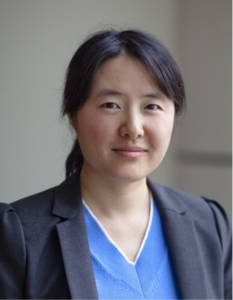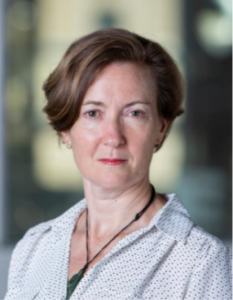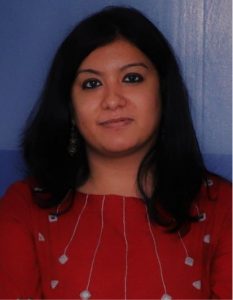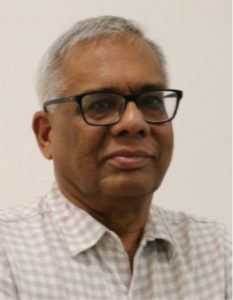Speaker profiles (Day 2 - Plant Humanities)
Yota Batsaki
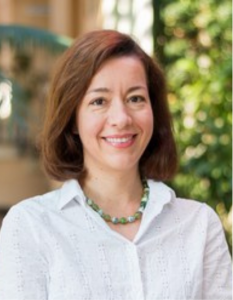
Yota Batsaki is the executive director of Dumbarton Oaks, a Harvard University research institute, museum, and garden located in Washington, DC. At Dumbarton Oaks, she also leads the Plant Humanities Initiative. Funded by the Andrew W. Mellon Foundation, the initiative comprises a digital site, the Plant Humanities Lab, and academic programming to advance the field of plant humanities. Batsaki holds a PhD in comparative literature from Harvard University. Her current research focuses on contemporary artists’ engagement with plants to address legacies of violence, trauma, and resilience.
Romita Ray
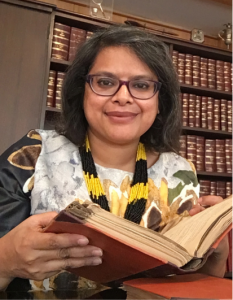
Romita Ray is associate professor of art history at Syracuse University in the United States. She received her M.A., M.Phil, and Ph.D degrees in art history from Yale University and her B.A. degree in art history from Smith College. Ray is the author of Under the Banyan Tree: Relocating the Picturesque in British India (2013) and guest curator of the British India section of the 2007 exhibition Between Worlds: Voyagers to Britain 1700-1850, organised by Dr. Jocelyn Hackforth-Jones at the National Portrait Gallery in London.
She has published widely on the art and architecture of the British empire in India, her area of specialisation, as well as on Indian cinema. Her research interests lie at the intersection of landscape studies, natural history, animal studies, and environmental humanities. Ray is currently working on a book manuscript about the visual cultures of tea in colonial and modern India. She is also co-editing, with Dr. Hackforth-Jones, Empire and Cultural Change: Visual Arts, Film, and Architecture, a four-volume book project for Routledge.
Amy Meyers
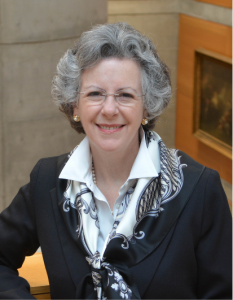
Amy Meyers (Yale Ph.D., American Studies, 1985) served as Director of the Yale Center for British Art from 2002 until her retirement in 2019. During her tenure at Yale, she also served as CEO of the Paul Mellon Centre for Studies in British Art in London.
Prior to her Yale appointment, Meyers held positions at the Center for Advanced Study in the Visual Arts at the National Gallery of Art, Washington, D.C; and The Huntington Library, Museum, and Botanical Gardens, where she served as Curator of American Art from 1988 through 2002. Meyers also has taught at the California Institute of Technology, the University of Michigan, and Yale. For her contributions to the history of art and architecture, she has received the Virginia Steele Scott Foundation Medal (2002); an honorary doctorate from Ursinus College (2010); the Benjamin West Medal (American Associates of the Royal Academy, 2012), and The Soane Honor (Sir John Soane’s Museum Foundation, 2017). During the academic year of 2020/21 she served as the inaugural Luce Foundation Future of Truth Fellow at the University of Connecticut Humanities Institute.
Meyers has written extensively on the visual and material culture of natural history in the transatlantic world, serving as editor of Knowing Nature: Art and Science in Philadelphia,1740 to 1840 (2011); Ways of Making and Knowing: The Material Culture of Empirical Knowledge, with Harold Cook and Pamela Smith (2011); The Art of Natural History: Illustrated Treatises and Botanical Paintings, 1400-1850, with Therese O’Malley (2008); Art and Science in America: Issues of Representation (1998); and Empire’s Nature: Mark Catesby’s New World Vision, with Margaret Pritchard (1998). With Dr. Therese O’Malley, she currently is organising a research project and exhibition on the artist-naturalist, William Bartram, and the emergence of an environmental conception of the natural world in colonial and early republican America.
Therese O’Malley
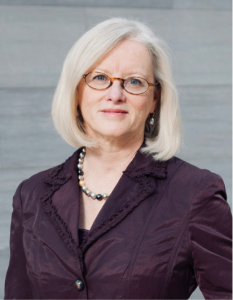
Therese O’Malley is a scholar of the history of landscape architecture, focusing on the 18th to 20th centuries and the transatlantic world exchange of plants and ideas. She received doctoral, masters and bachelor’s degrees in art history from the University of Pennsylvania. O’Malley retired in September 2021 as Associate Dean at the Center for Advanced Study in the Visual Arts at the National Gallery of Art in Washington, D.C., which she joined in 1987. There she oversaw initially the fellowship program and for almost 30 years, the programs of publications and scholarly meetings.
Her many publications include Modernism and Landscape Architecture, 1890–1940, co-edited with Joachim Wolschke Buhlmann (2015), and The Art of Natural History, co edited with Amy Meyers (2008). She was the guest curator and author for the exhibition Glasshouses, Architecture of Light and Air (New York Botanical Gardens, 2005), and contributor to the exhibition Unpacking the Archives: Perspectives on Frank Lloyd Wright, (MOMA, 2017) and its catalogue. Her encyclopaedic Keywords in American Landscape Design (2010)—an authoritative reference work with contributions by Anne Helmreich and Elizabeth Kryder-Reid —has been expanded under her direction as a digital database project, History of Early American Landscape Design (heald.nga.gov).
In addition to holding guest professorships at Penn, Harvard, Princeton and Temple universities, she has served on several boards and advisory committees including at Dumbarton Oaks, Harvard, the Mount Vernon Place Conservancy, Baltimore, Maryland, and The New York Botanical Garden’s Mertz Botanical Library and Mellon Humanities Institute. Therese O’Malley was the two-term chair of the Association of Research Institutes in Art History; and vice president and president of the Society of Architectural Historians (2000-2006), during which time she helped found the SAH Landscape History Chapter (2004). In 2016, she was made a fellow of the SAH. O’Malley is a founding board member of the Foundation for Landscape Studies. Since 2010, she has been an advisor to the United States Ambassadors Fund for Cultural Property. With Dr. Amy Meyers, she is engaged in a long-term research and exhibition project on the naturalist/artist/explorer William Bartram, (1739-1823).
Timur W Hammond
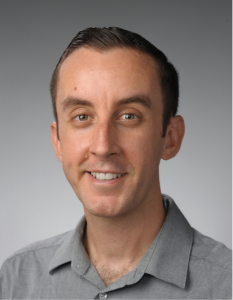
Timur Hammond is an Assistant Professor in the Department of Geography and the Environment at Syracuse University. Trained as a cultural and urban geographer, his research and teaching explore how people create meaningful worlds by encountering and transforming urban environments. His current book project, Building Islam: Stories and Monuments in a Changing Istanbul, develops this project through a geo-history of the neighbourhood of Eyüp, home to one of Istanbul’s most important Muslim shrines. Other recent articles have examined the geographies of commemoration following Turkey’s July 2016 coup attempt and critically assessed the value of a ‘regional’ frame for understanding heritage in the Middle East. He also writes a biweekly newsletter on Substack called ‘stories so far.’
Isabelle Charmantier
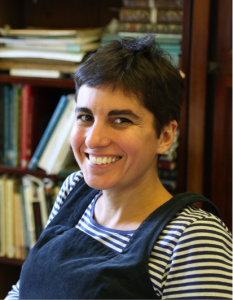
Dr Isabelle Charmantier received a PhD in history of science in 2008. After a postdoctoral project on Carl Linnaeus’ manuscripts, she retrained as an archivist, and worked for the Linnean Society cataloguing these manuscripts. After a spell as Collections Manager for the Freshwater Biological Association, she rejoined the Linnean Society, where she is now Head of Collections.
Vinita Damodaran
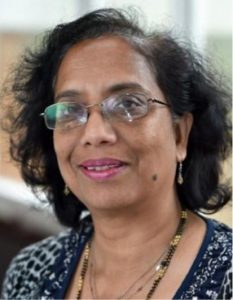
Vinita Damodaran is Professor of South Asian History (History) and Professor of South Asian History (International Development) at the School of Media, Arts and Humanities, University of Sussex. She is also the director of the Centre for World Environmental History at Sussex.
Professor Damodaran is a historian of modern India, interested in sustainable development dialogues in the global South. Her work ranges from the social and political history of Bihar to the environmental history of South Asia, including using historical records to understand climate change in the Indian Ocean World. Her publications include; Broken Promises, Indian Nationalism and the Congress Party in Bihar (1992), Nature and the Orient, Essays on the Environmental History of South and South-East Asia(1998), Post Colonial India, History Politics and Culture (2000), British empire and the natural world: environmental encounters in South Asia, (2010), East India Company and the Natural world (2014) and more recently Climate change and the Humanities (2017), Geography in Britain after the second World War (2019), Commonwealth Forestry and Environmental History, Empire, Forests and Colonial environments in Africa, the Caribbean, South Asia and New Zealand (2020). She is also the author of several articles in established journals. She is particularly interested in questions of environmental change, identity and resistance in Eastern India. An experienced researcher and teacher, she has an M.Phil from JNU and a PhD from Cambridge. Dr Damodaran has had several research grants for her work from the ESRC, the Leverhulme Trust, the British Academy and the AHRC. She is currently leading an AHRC network project on the botanical and meteorological history of the Indian Ocean and is working on two projects one with the McGill university and the second with Noragric.
Sumana Roy
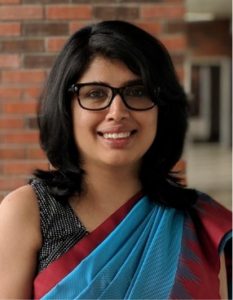
Sumana Roy is Associate Professor of English and Creative Writing at Ashoka University. She is the author of How I Became a Tree, a work of nonfiction, Missing: A Novel, Out of Syllabus: Poems, and My Mother’s Lover and Other Stories, a collection of short stories.






